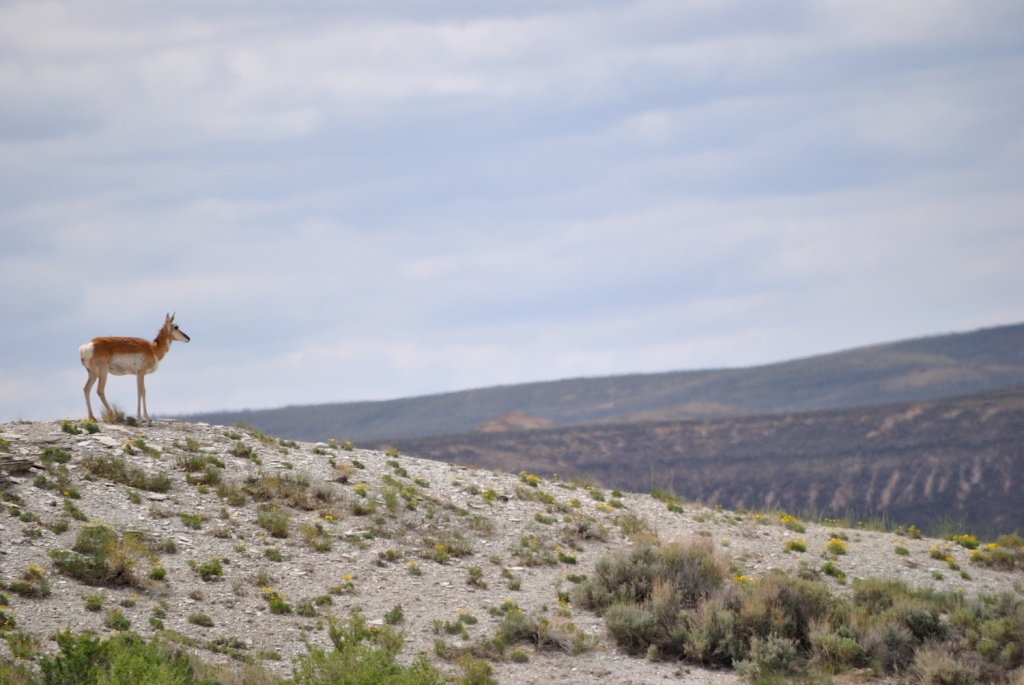I wasn’t looking for artifacts, I was just hiking along an old Wyoming two-track. Finding flakes and flake tools was not a surprise: artifacts are scattered all across the high plains of Wyoming, sometimes in surprising density, and sometimes, like this time, a single deposit. Medicine Lodge, a site in northern Wyoming, has been inhabited for at least 10,000 years (Frison and Walker 2007). It’s not much of a stretch to believe that this site has also had some kind of human impact for thousands of years, even if it was seasonal habitation or the occasional traveler. In more recent centuries this part of Wyoming was a nexus of Cheyenne, Shoshone, and Arapaho activity (Dunbar-Ortiz 2014).

I learned my mental picture of the longstanding history of native people who lived in the western United States was ill informed when I read The Journey of Alvar Nuñez Cabeza de Vaca seven or eight years ago.
Cabeza de Vaca’s account of the lifestyle and community life of North American native peoples when he traveled from Florida to Mexico city in the 1530s, testifies of a vast network of villages, roads, trails, and communication lines all across what is now the southern Unites States. He tells about entering villages where the people had heard of their coming and were not in the least surprised at their arrival. He also tells of goods being transported within a developed trade economy. His narrative is in stark contrast to the story offered by some Hollywood westerns and western fiction books which depict native people groups as ignorant, crude, scarce, disconnected, and barely scraping by.
From Cabeza de Vaca’s writings, it has been speculated that the population of Native Americans was much higher in Cabeza de Vaca’s day and was severely impacted by diseases brought in by the Spanish explorers. If that is true, the numbers of native people by the time of western expansion in the 1800s, could reflect a drastic decrease in the overall population density and connectivity of native people groups. Still, I have come to realize the fictional, misinformed Hollywood version of Native Americans is not representative of their long history in what is now known as the western United States.

I am drawn to places where I can look out over the landscape. I don’t think people and animals are very different in that respect or have changed much over time, so it’s no surprise to me that these remnants of another’s labor were found on a knoll that afforded a view to the horizon in three directions. I was, however, struck by the perfect backrest and seat made by the rocks.

I sat where my predecessor might have sat. I looked at the scene he or she would have viewed. I wondered if it had changed a lot or a little. I wondered about his or her life. Was it an idyllic life? Surely it contained both laughter and tears. They are both a part of life no matter where or when you live.
Were they here because they chose this place? Or were they here because they were forced to be here? There’s little doubt that the native people forced from their homeland due to conflicts with Europeans further east would have had the same kind of deep sorrow that any human has when forced to forge a new life in a strange place.
I sat and thought about these things. I prayed to the God who knows that person as much as He knows me, and I walked on down the hill feeling a little more at peace.

- Frison, George C. and Danny N. Walker. 2007. Medicine Lodge Creek: Holocene Archaeology of the Eastern Big Horn Basin, Wyoming: Volume 1. Clovis Press.
- Dunbar-Ortiz, Roxanne. 2014. Indigenous Peoples History of the United States. Beacon Press. Boston, Massachusetts.
- Bandalier, Adolph Francis (editor). The Journey of Alvar Nuñez Cabeza de Vaca and His Companions from Florida to the Pacific 1528-1536. Translated from His Own Narrative by Fanny Bandelier. (New York: A.S. Barnes & Company, 1905)